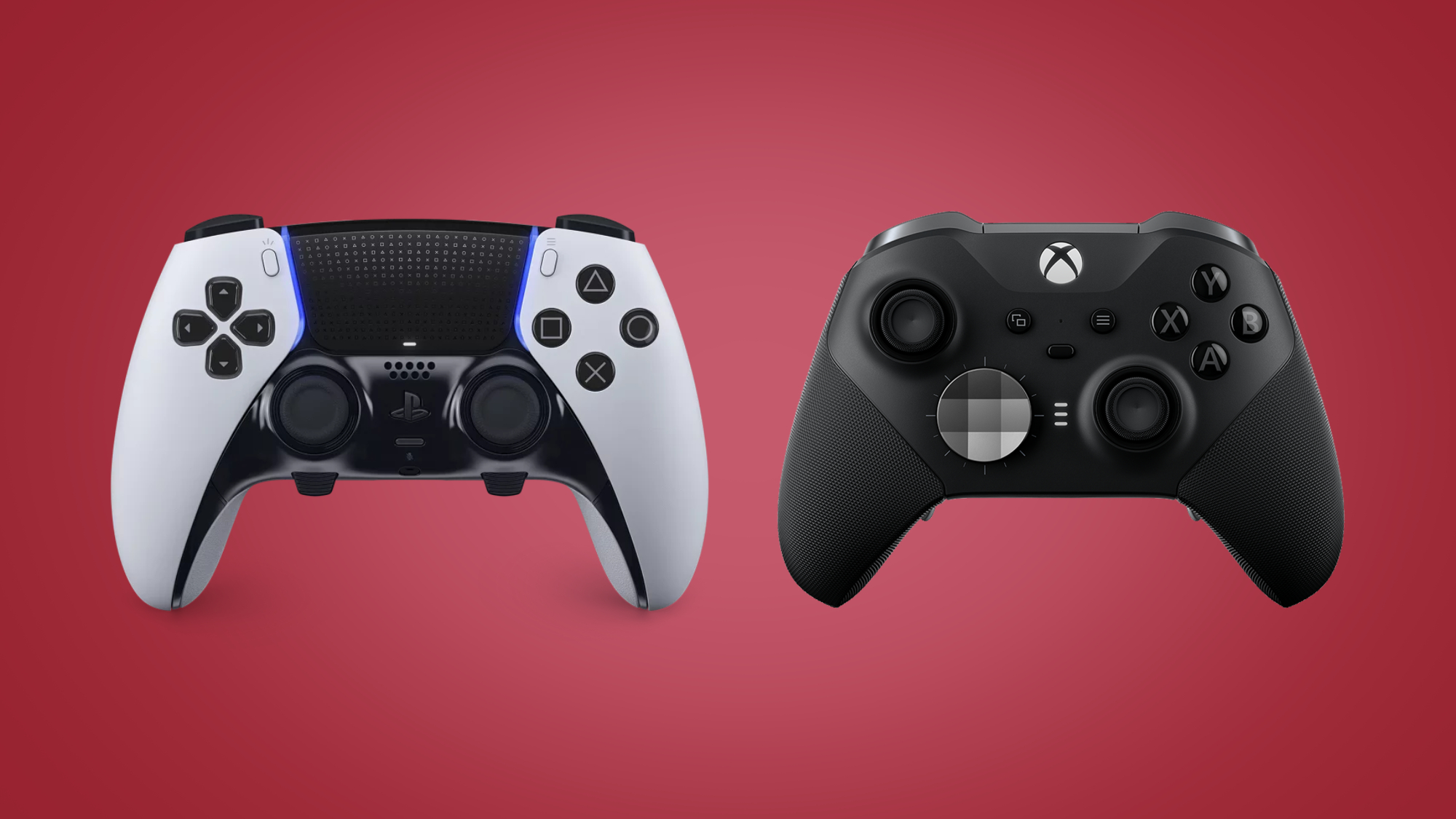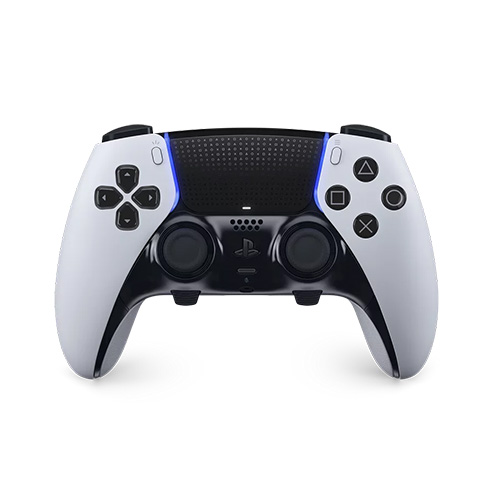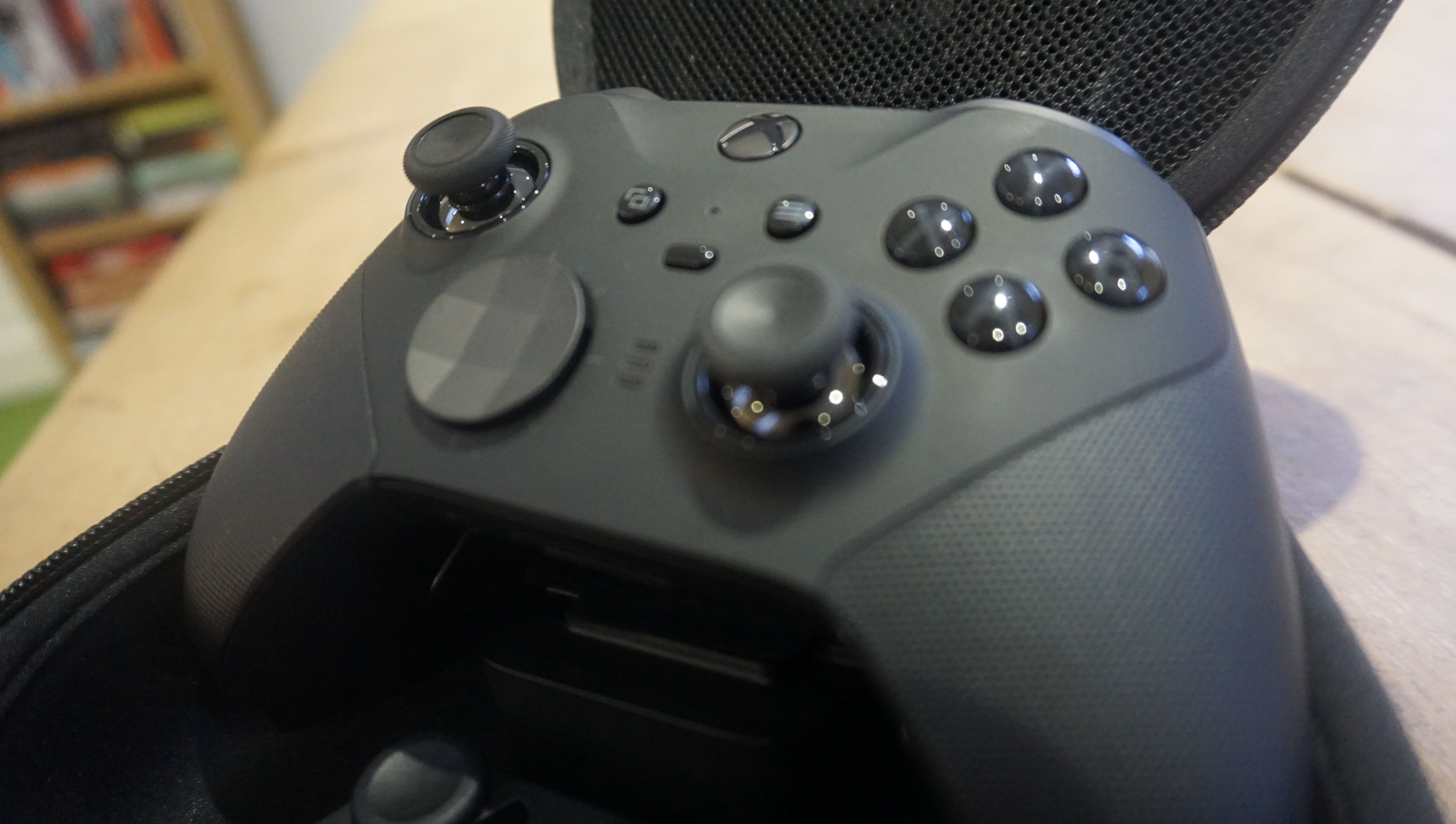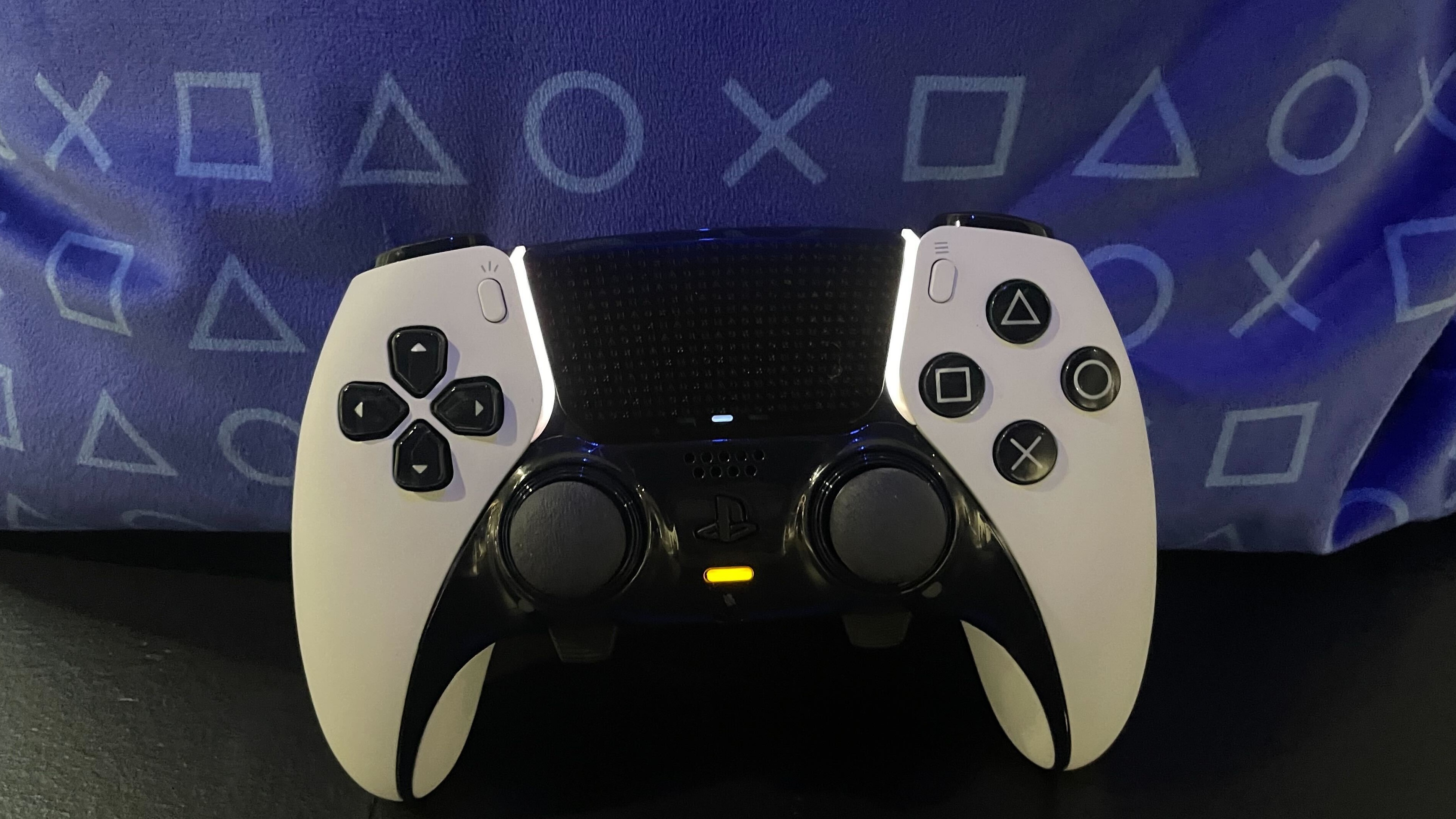

The DualSense Edge may be a slight upgrade over its base model, but it's still one of the best in the business thanks to its continued usage of bespoke haptic feedback and the addition of an awesome pair of Function buttons. Battery life suffers, however.
Pros
- Function buttons are fantastic
- Robust customization options
- Solid build quality
Cons
- Poor battery life
- Not a substantial upgrade

The Xbox Elite Wireless Controller Series 2 is one of the best controllers you can buy, built from seriously premium material and boasting massive battery life. It's pricey, but well worth the money if you're after a truly luxury controller experience.
Pros
- Interchangeable sticks
- Comfortable rubberized grip
- Shorter hair trigger locks
Cons
- Expensive
- Some may find it clunky
The Xbox Elite Controller Series 2 has been around since 2019, offering a luxury gameplay experience to those willing to pay its hefty price tag. But Sony has since entered the ‘Pro’ space with its own gamepad: the DualSense Edge, an upgraded model of its phenomenal DualSense controller for PlayStation 5.
With the DualSense Edge, Sony aims for the same goal as Microsoft’s Xbox Elite Controller Series 2; to offer a more premium feeling controller to make longer gaming sessions all the more satisfying.
As a premium pad that’s done the rounds for a few years, how does the Elite Series 2 stack up today? And by just how much is the relative newcomer, the DualSense Edge, able to shake things up in the ‘Pro’ controller space? Read on for our detailed breakdown as we pit the DualSense Edge vs Xbox Elite Controller Series 2.
DualSense Edge vs Xbox Elite Controller Series 2: price and availability
If you’re considering buying the Xbox Elite Controller Series 2, you have a couple of options. The standard black model retails for $179.99 / £159.99 / AU$249.95, and includes extras like a carry case and a suite of swappable modules, including back paddles and sticks. A cheaper Core version of the Elite Series 2 is also available for $129.99 / £114.99 / AU$137.44, though this only contains the controller with no additional modules included.
Your choices with the DualSense Edge are much stricter. There’s one model available, which costs $199.99 / £209.99 / AU$339.95. That’s quite a bit more expensive than the Elite Series 2, especially if you’re in the UK or Australia.
DualSense Edge vs Xbox Elite Controller Series 2: design

The DualSense Edge and Xbox Elite Controller Series 2 share similar silhouettes to their base model counterparts. The Edge has a near-identical look with the standard DualSense, while the Elite Series 2 looks the part of a souped-up Xbox Wireless Controller.
While looking similar to their respective base models, each pad is noticeably weightier, especially in the Elite Series 2’s case. However, they certainly aren’t too heavy, instead using their weight to rest more firmly in your hands, allowing each controller’s grips to feel more satisfying.
Sign up for breaking news, reviews, opinion, top tech deals, and more.
The big differences come with the fundamentals of each controller. That would be buttons, D-pad, trigger design, and changes to standout features like the Edge’s touchpad and togglable options like trigger locks.

Compared to the original DualSense, the D-pad and face buttons on the DualSense Edge have received a facelift, now sporting a glossy black finish that contrasts nicely with the matte white shell, and the triggers have a satisfyingly bumpy texture and a pair of trigger locks. The locks are good if you prefer your triggers to depress less for certain games.
Now, the changes to the Xbox Elite Series 2 feel more physically substantial. While its buttons and triggers feel largely similar to the base pad (aside from the addition of those trigger locks), we see an upgraded D-pad sporting a slick metal finish and much sturdier-feeling analog sticks. These higher-quality materials help the Elite Series 2 feel premium.
In comparison, the Edge’s upgrades appear mostly aesthetic. Thankfully that changes with the touchpad, which now sports a black finish with the iconic PlayStation button iconography embossed across the surface. It is noticeably better now and helps the controller’s lightbars to stand out.
DualSense Edge vs Xbox Elite Controller Series 2: features

Both the DualSense Edge and the Xbox Elite Controller Series 2 offer features that elevate them above a more standard pad. For starters, both come with optional sets of back paddles that fit magnetically into slots on the rear of the controller. The Edge, however, only features two back paddle slots compared to the Elite Series 2’s four.
Each controller also packs in a selection of swappable stick options. With the Edge, we have a set of four alternative thumb caps. However, these are all of the same convex design, and I find these aren’t as good as the slightly more caved-in defaults. Both pads offer settings that allow for the customization of stick sensitivity and tension, though, which is fantastic.

The Elite Series 2 simply wins out in this regard. It comes with a range of extra convex and concave thumb caps, and they’re attached to a set of swappable metallic sticks. Throw in a swappable Xbox One-style D-pad and a magnetic charging dock, and the Elite’s extras outclass the Edge’s by a good margin.
That said, the DualSense Edge picks up the slack with a USB cable lock that’s perfect if you prefer wired connections. The controller also features a pair of Function buttons that rest underneath the analog sticks. I found these an excellent addition as they allow players to quickly and easily switch button profiles and adjust the headset and chat volume in a matter of seconds.
It’s one of my favorite features on the Edge and streamlines the process of custom button mapping compared to the relatively clunky process on Xbox, where you’re required to exit your game and load a separate app for profile creation.
DualSense Edge vs Xbox Elite Controller Series 2: performance and battery life

Thanks to the slightly weightier feel and higher quality components, you’re getting an improved gameplay experience on either controller. While the Elite Series 2 isn’t too mechanically different from the Xbox Wireless Controller, its strong premium feel and customizability makes it widely accessible to an array of players and their preferences.
The DualSense Edge still has the… edge when it comes to how it feels when gaming. The incredible haptic feedback and adaptive triggers carry over to the premium pad, meaning you’ll still enjoy the immersion it provides over the Elite Series 2. The features themselves don’t boast any real improvement over the regular DualSense, but they don’t need to, given how strong the haptics already are.
Where the Edge is greatly let down, though, is in its battery life. Sony has already admitted to the Edge’s battery life being “moderately shorter” than the standard DualSense, which rang true in my testing. From a full charge, the DualSense Edge managed just over seven hours before depleting. That’s poor, given the high cost of the controller.
The Elite Series 2 impresses here, offering around 35-40 hours of battery life on a single charge. That’s even an improvement over the Xbox Wireless Controller, whose battery life sits in the 25-30 hour range.
DualSense Edge vs Xbox Elite Controller Series 2: verdict

Whether you’re playing on PS5 or Xbox Series X, or looking for a premium option for play on PC, both the Edge and the Elite Series 2 capitalize on the strengths of their base counterparts. However, I’d argue the Elite Series 2 does so to a greater extent thanks to its seriously premium feel, high battery life and relatively lower price point. The option for a cheaper variant without all the extras is a welcome addition, too.
The DualSense Edge, while primarily let down by its poor battery life, still shines as an upgraded DualSense. However, considering the price, when the standard DualSense is already so good, the upgrades you’re getting with the Edge are slight at best.
Does the Elite Series 2 work on PS5?
No, neither controller works on competing hardware without using a third-party adaptor. If you own either a PS5 or an Xbox Series X|S, you’ll need to stick to relevant hardware.
Do the DualSense Edge and Xbox Elite Series 2 work on PC?
Yes, both pads work flawlessly on PC without needing extra drivers. In the Edge’s case, certain games will also be compatible with its bespoke haptic feedback and adaptive triggers. These include the Steam ports of PlayStation Studios titles.

Rhys is TRG's Hardware Editor, and has been part of the TechRadar team for over four years. Particularly passionate about high-quality third-party controllers and headsets, Rhys strives to provide easy-to-read, informative coverage on gaming hardware of all kinds. As for the games themselves, Rhys is especially keen on fighting and racing games, as well as soulslikes and RPGs.